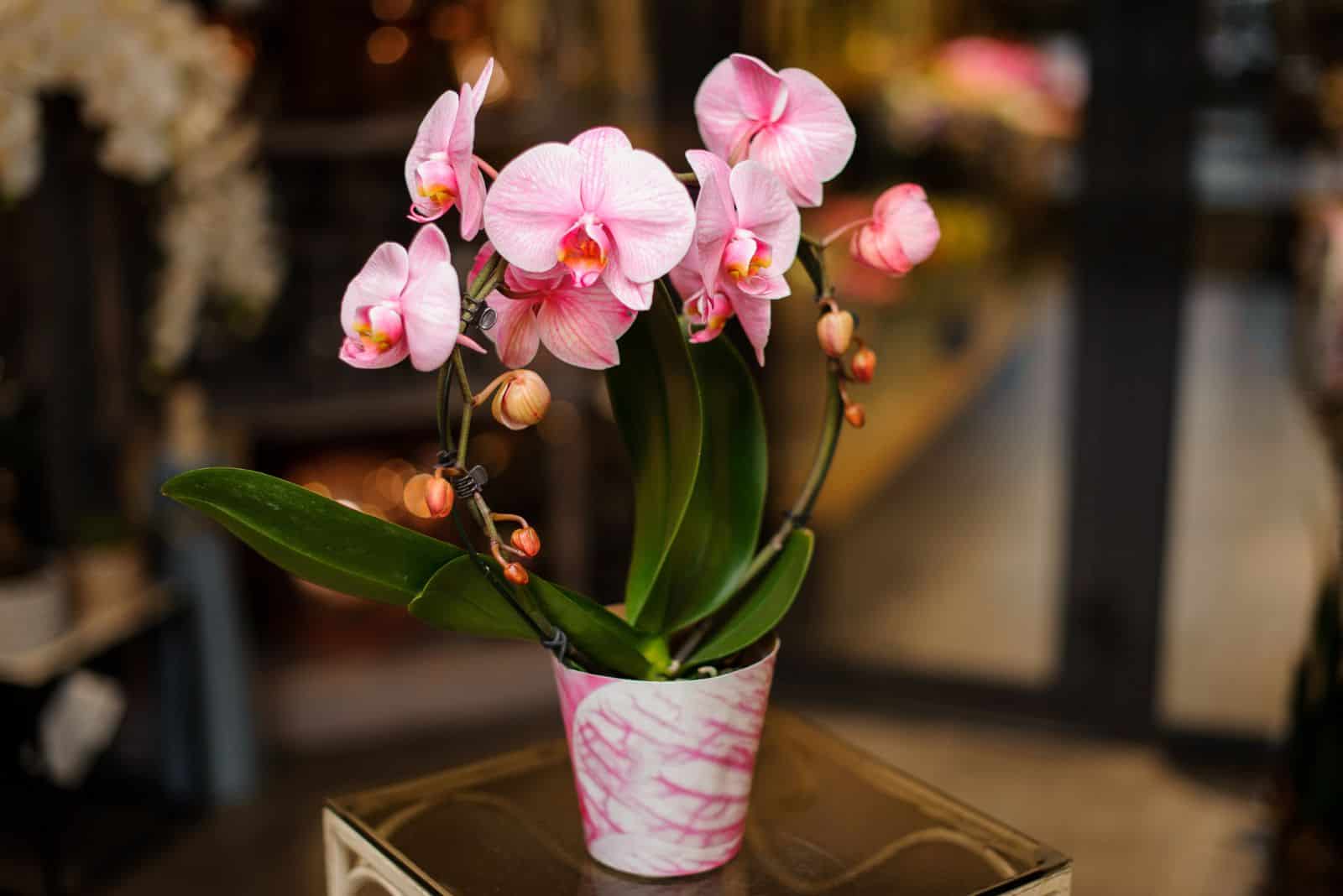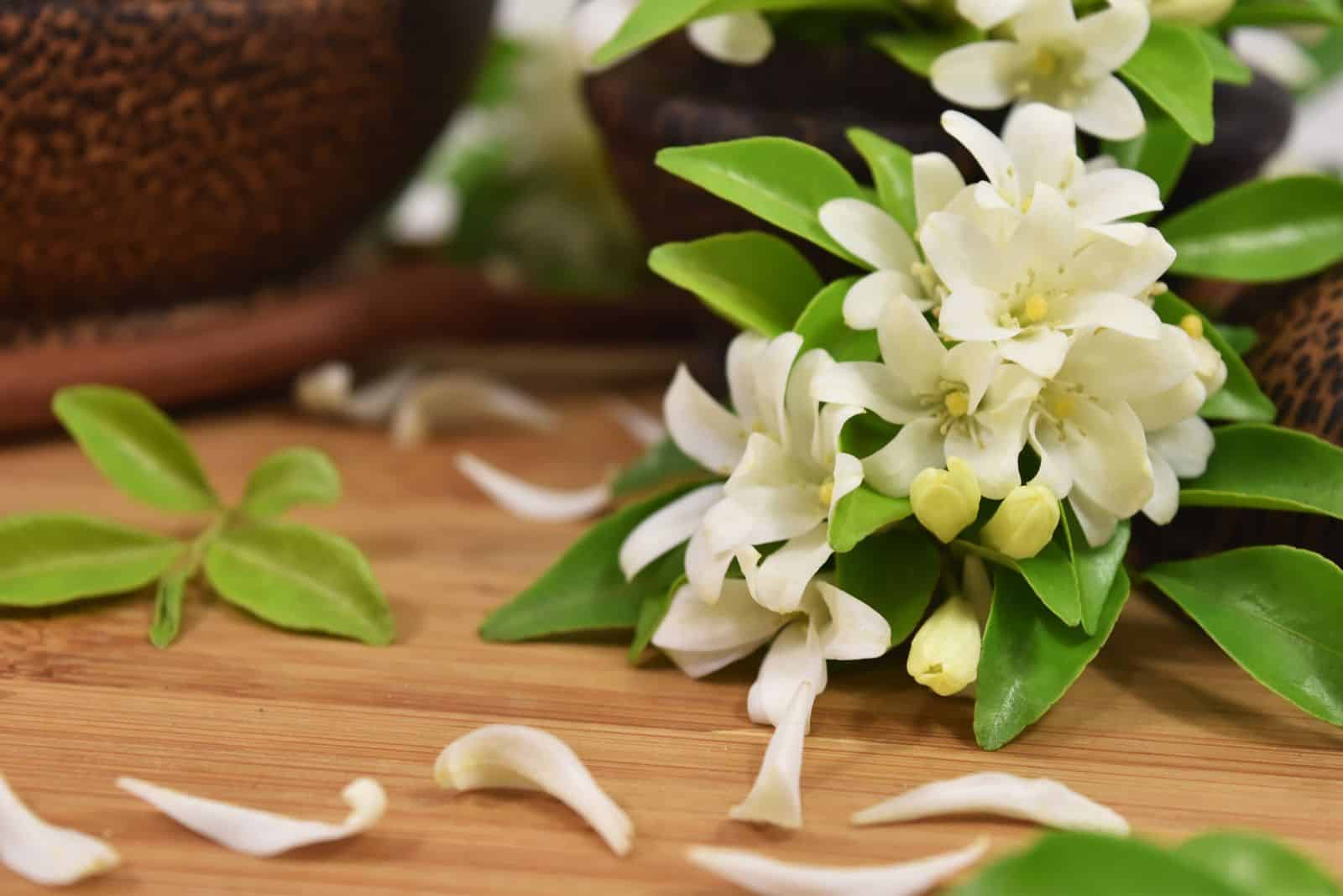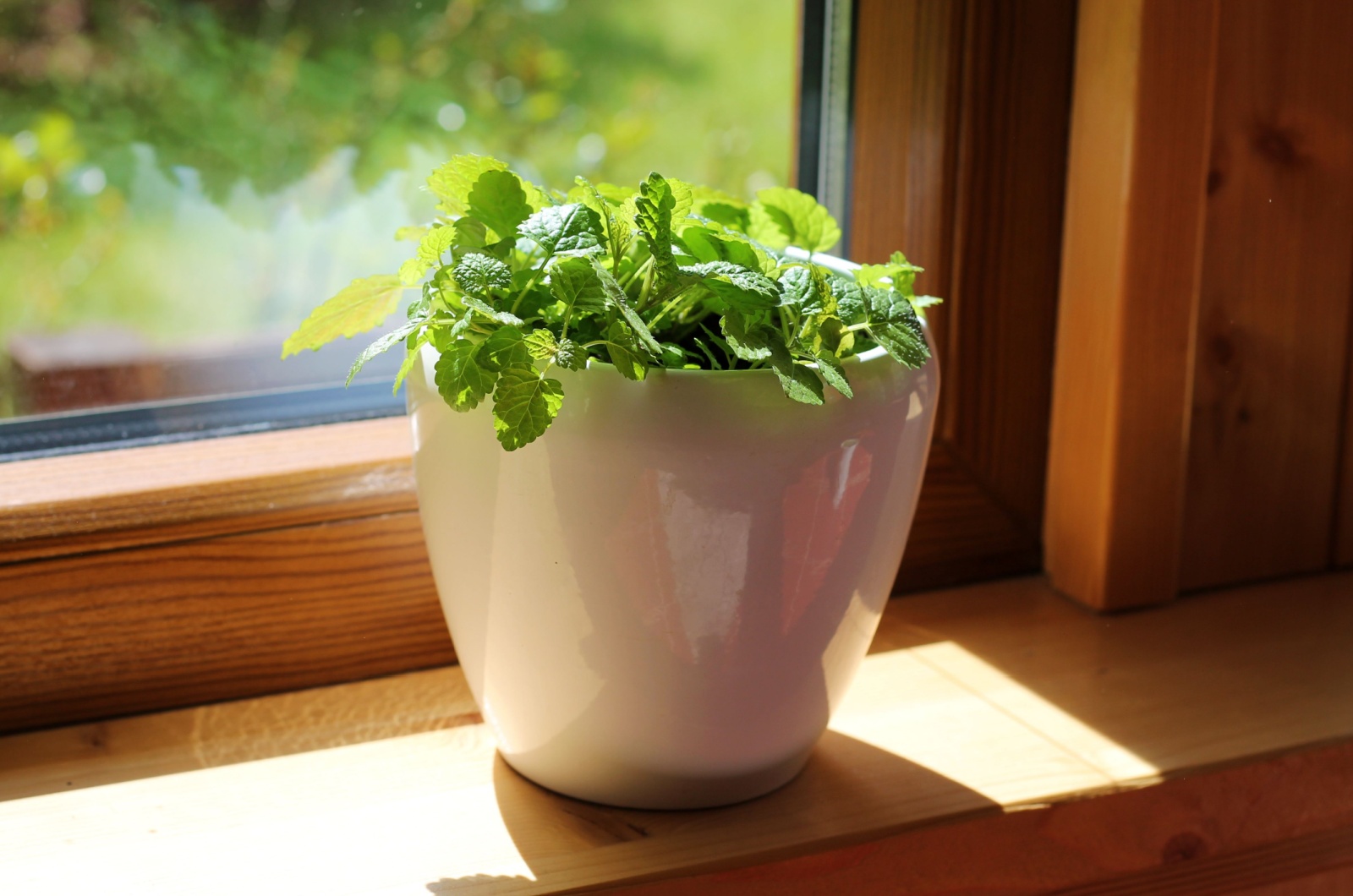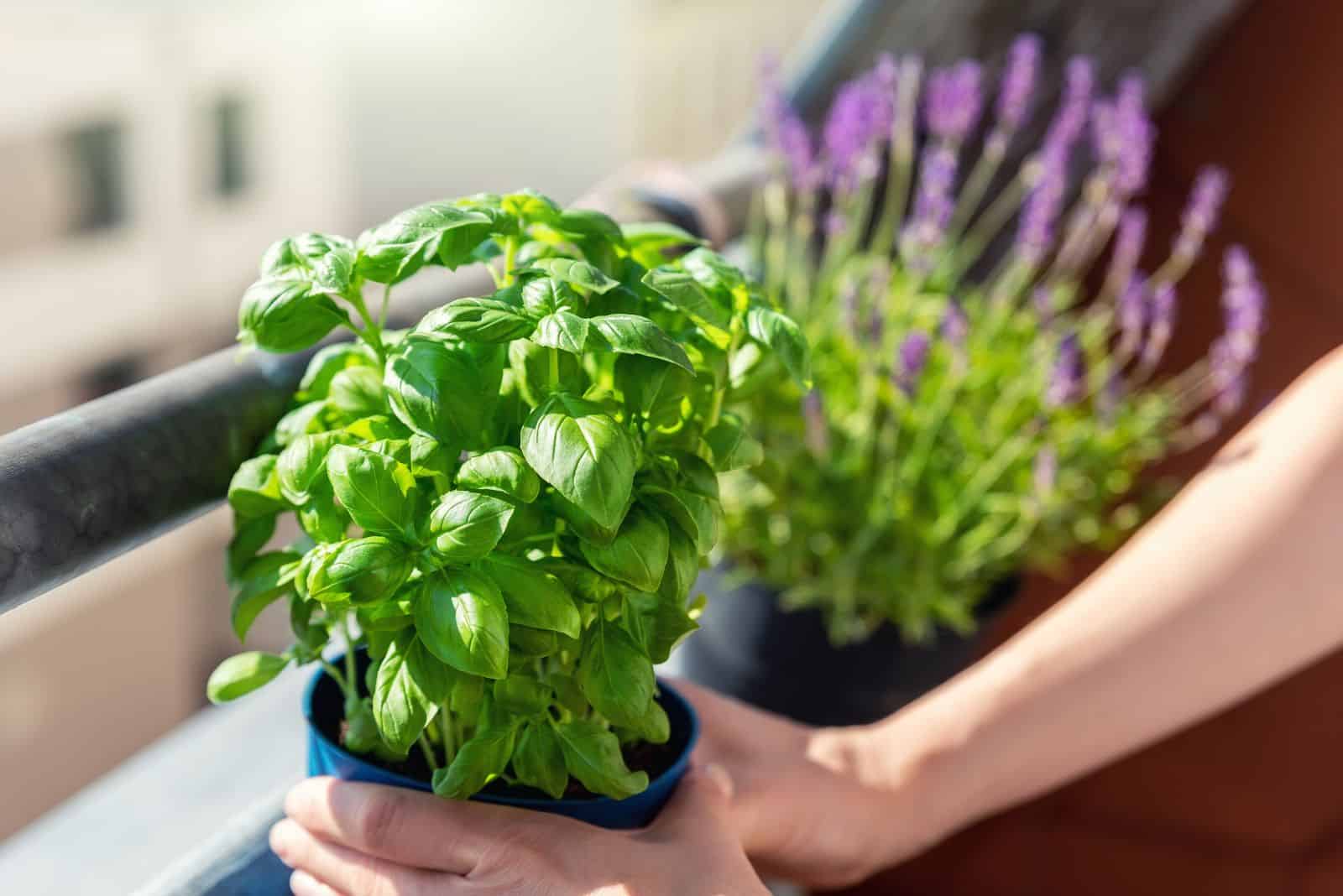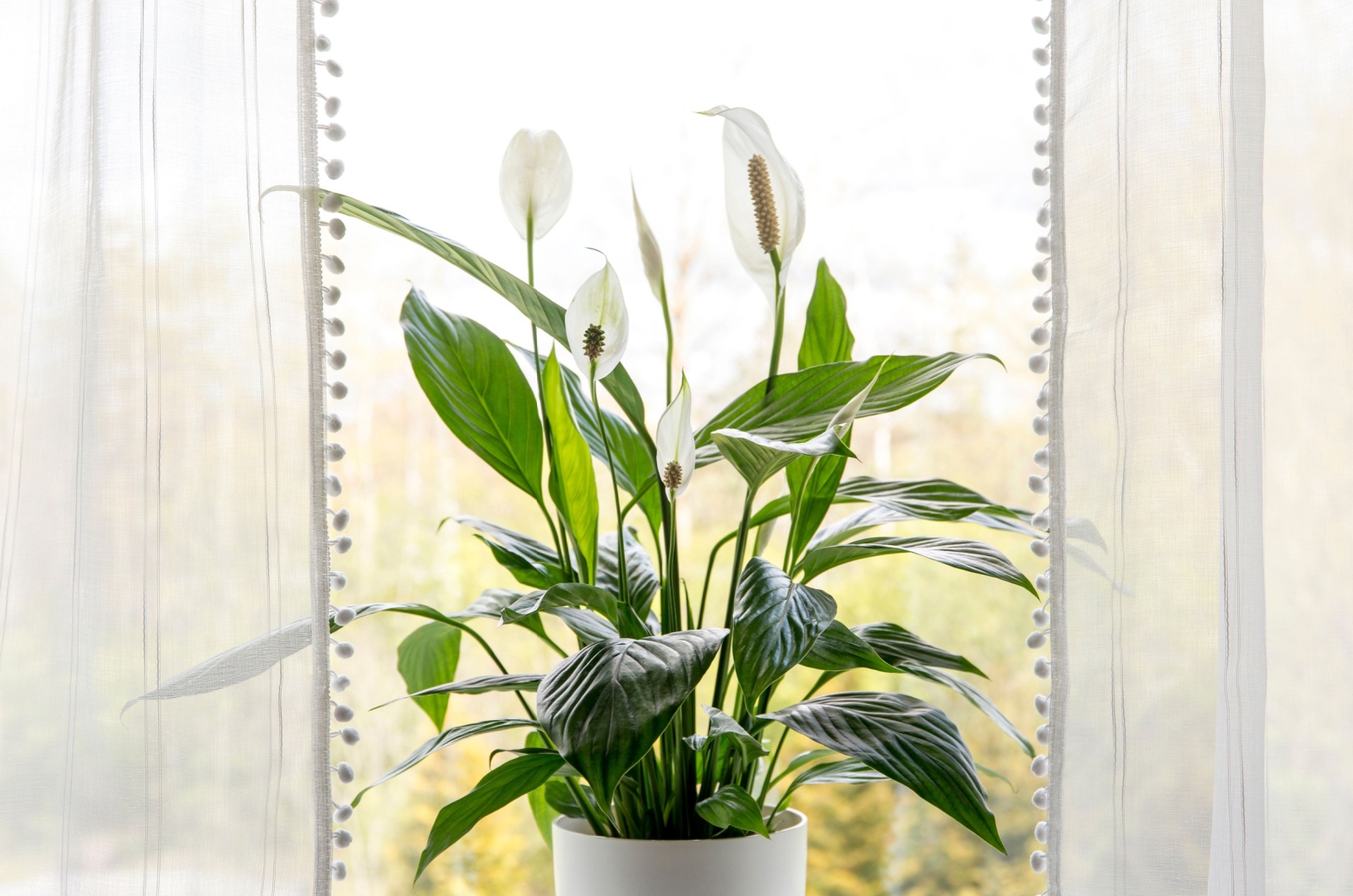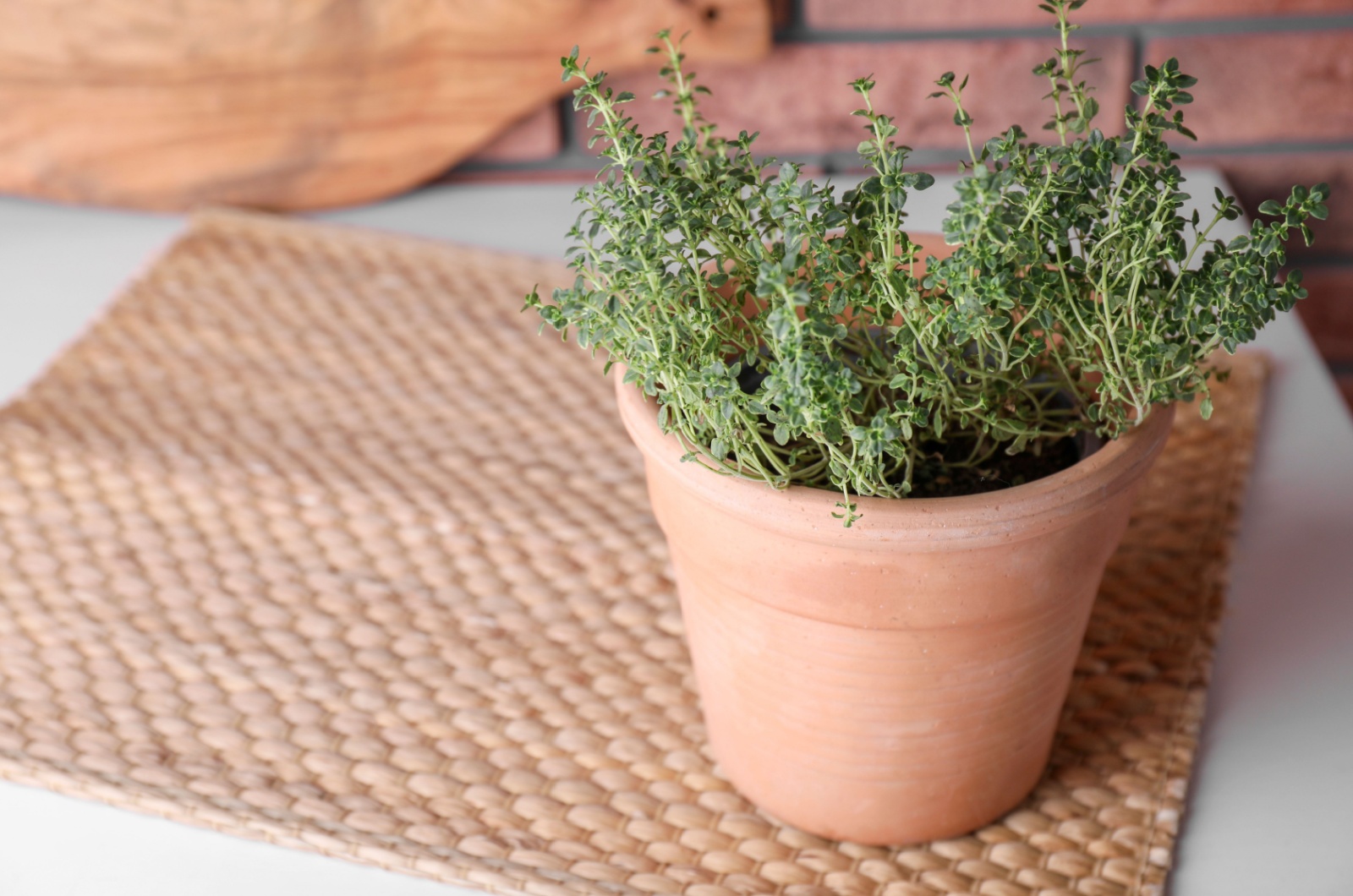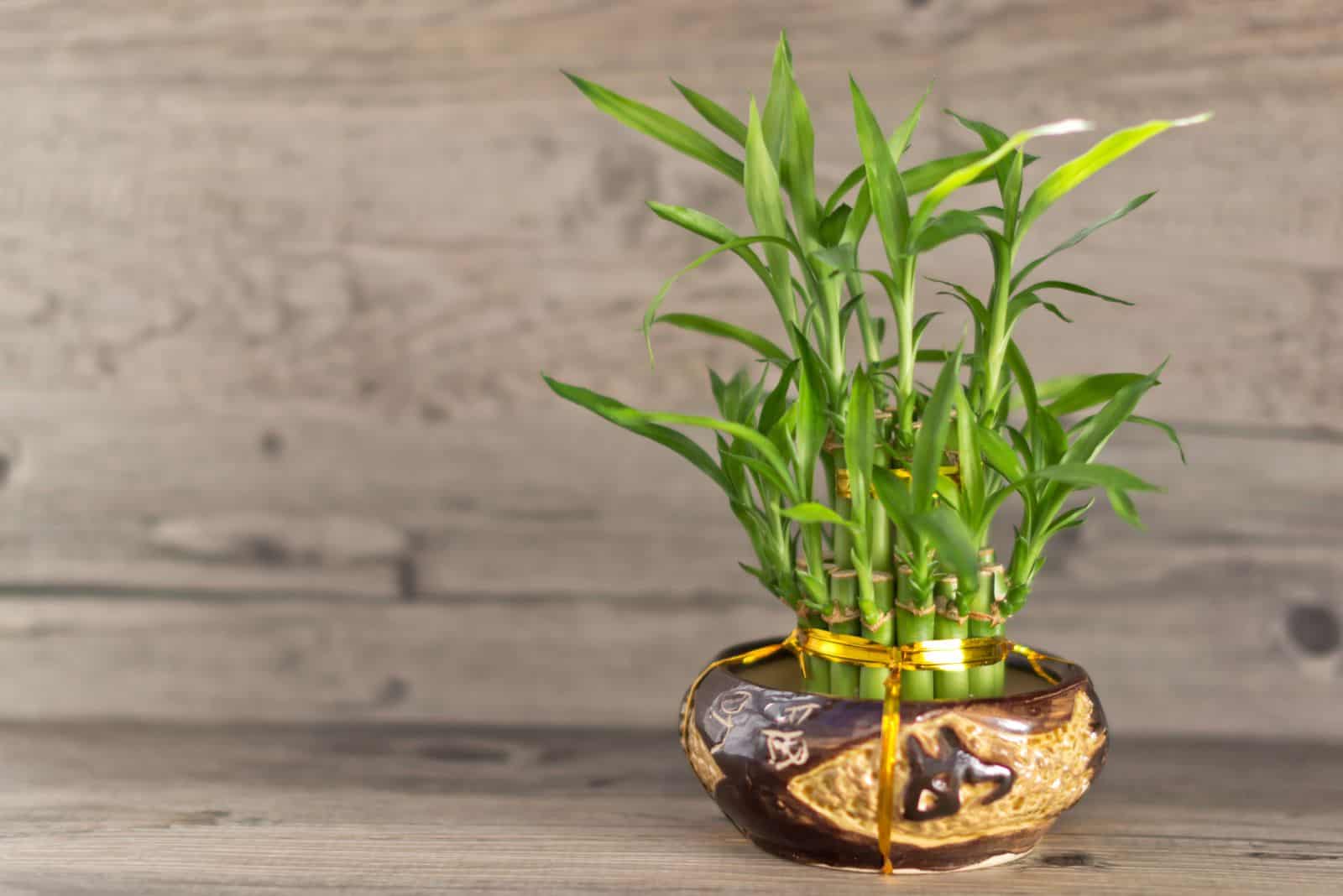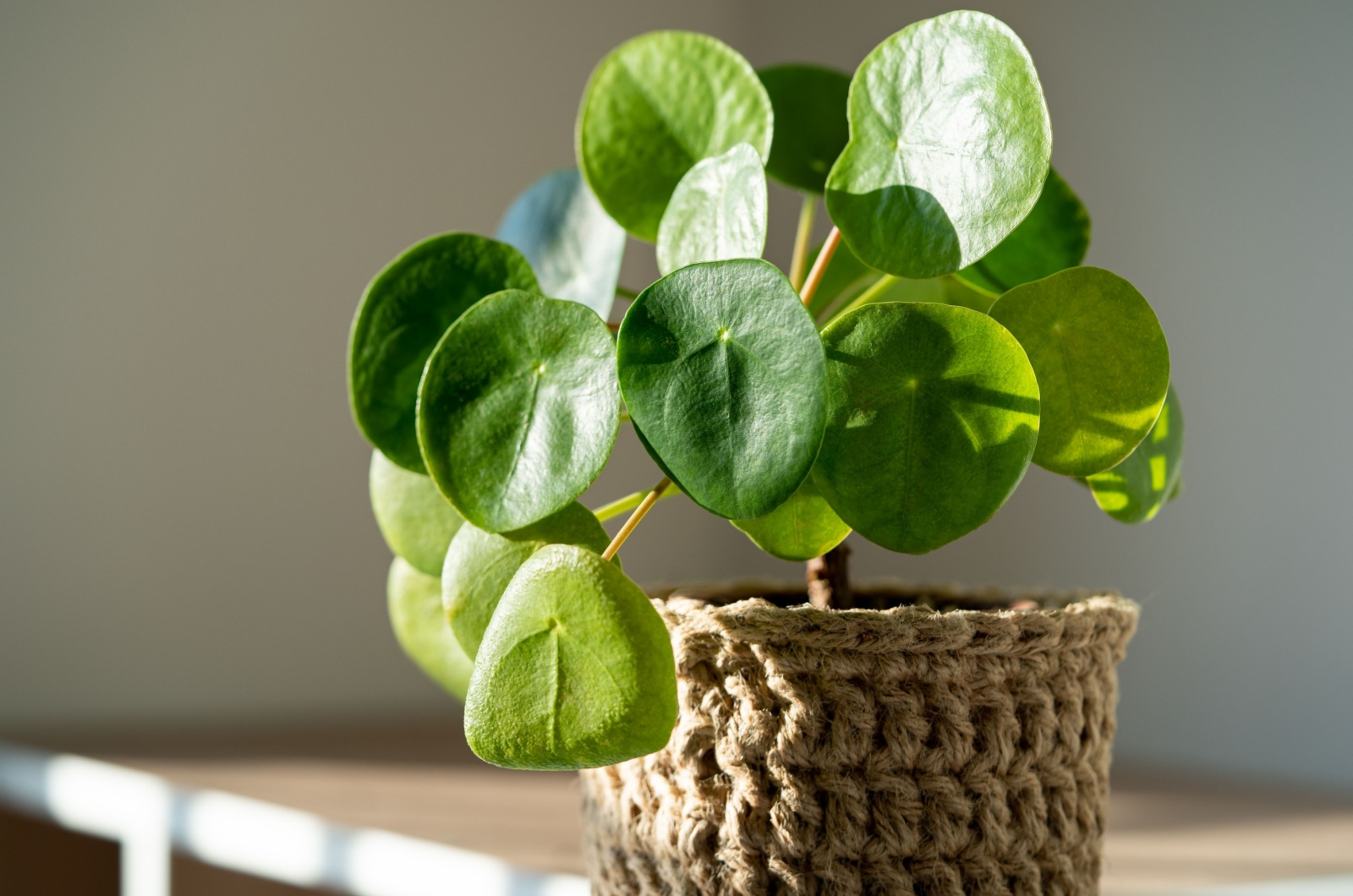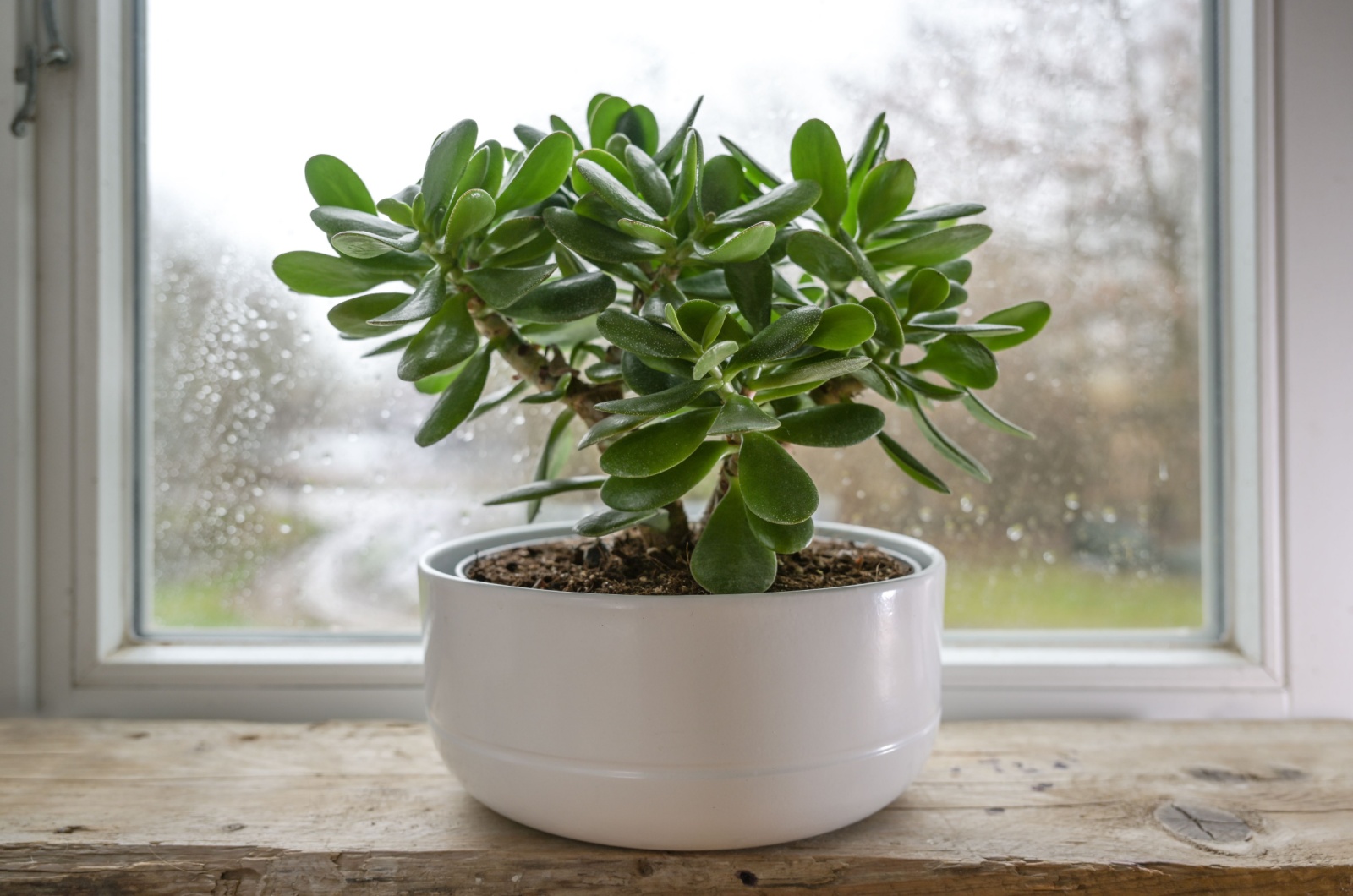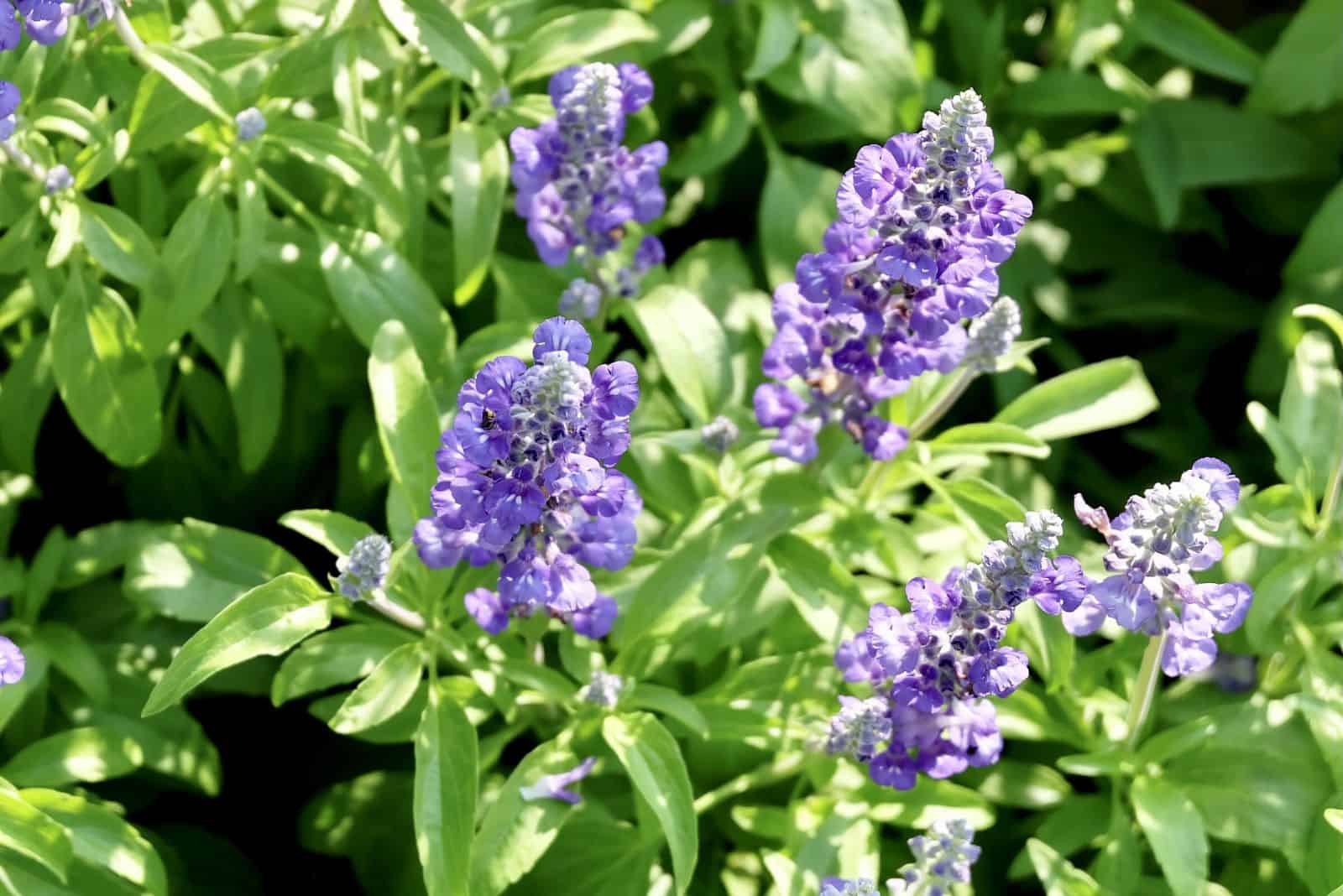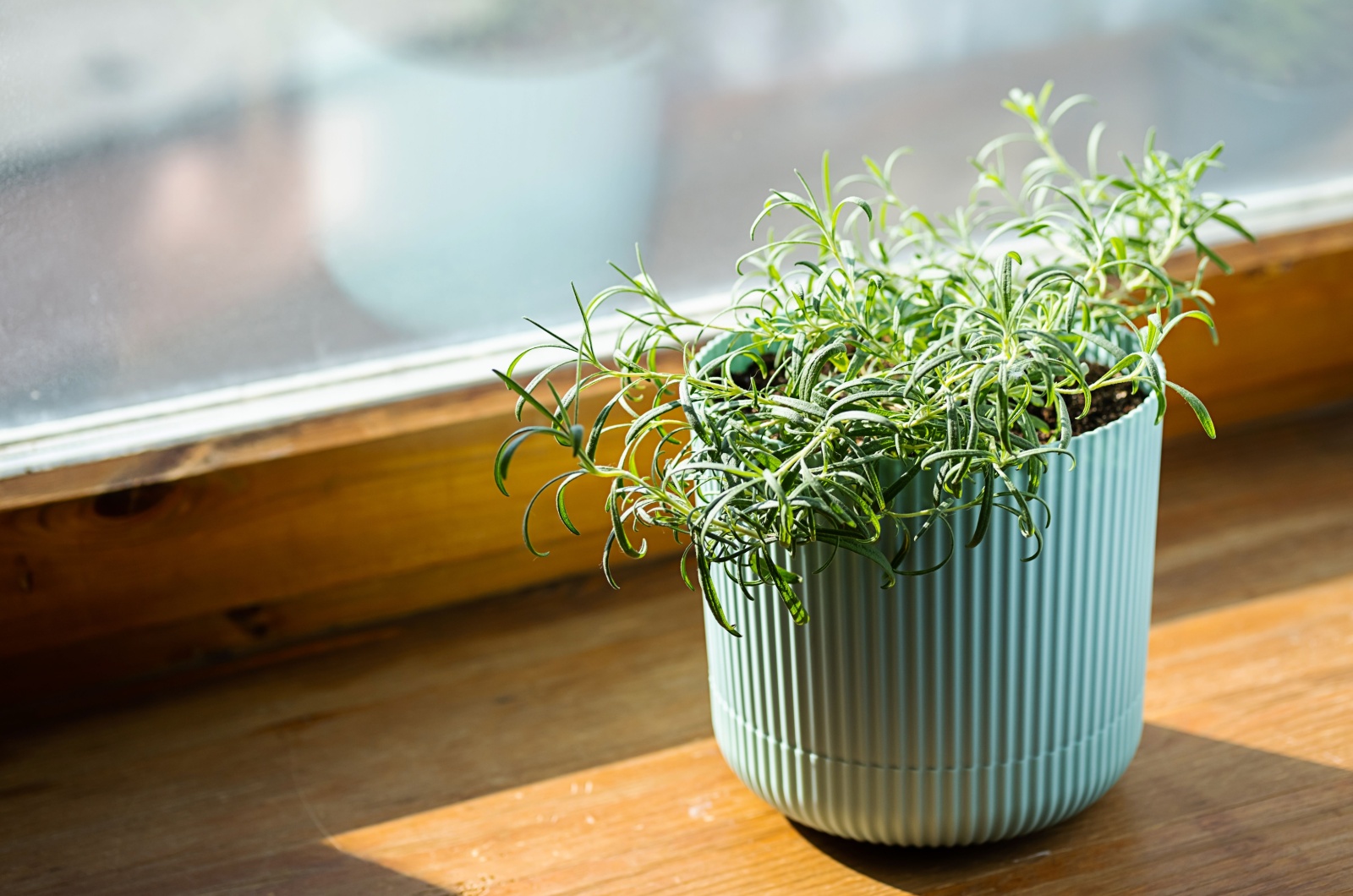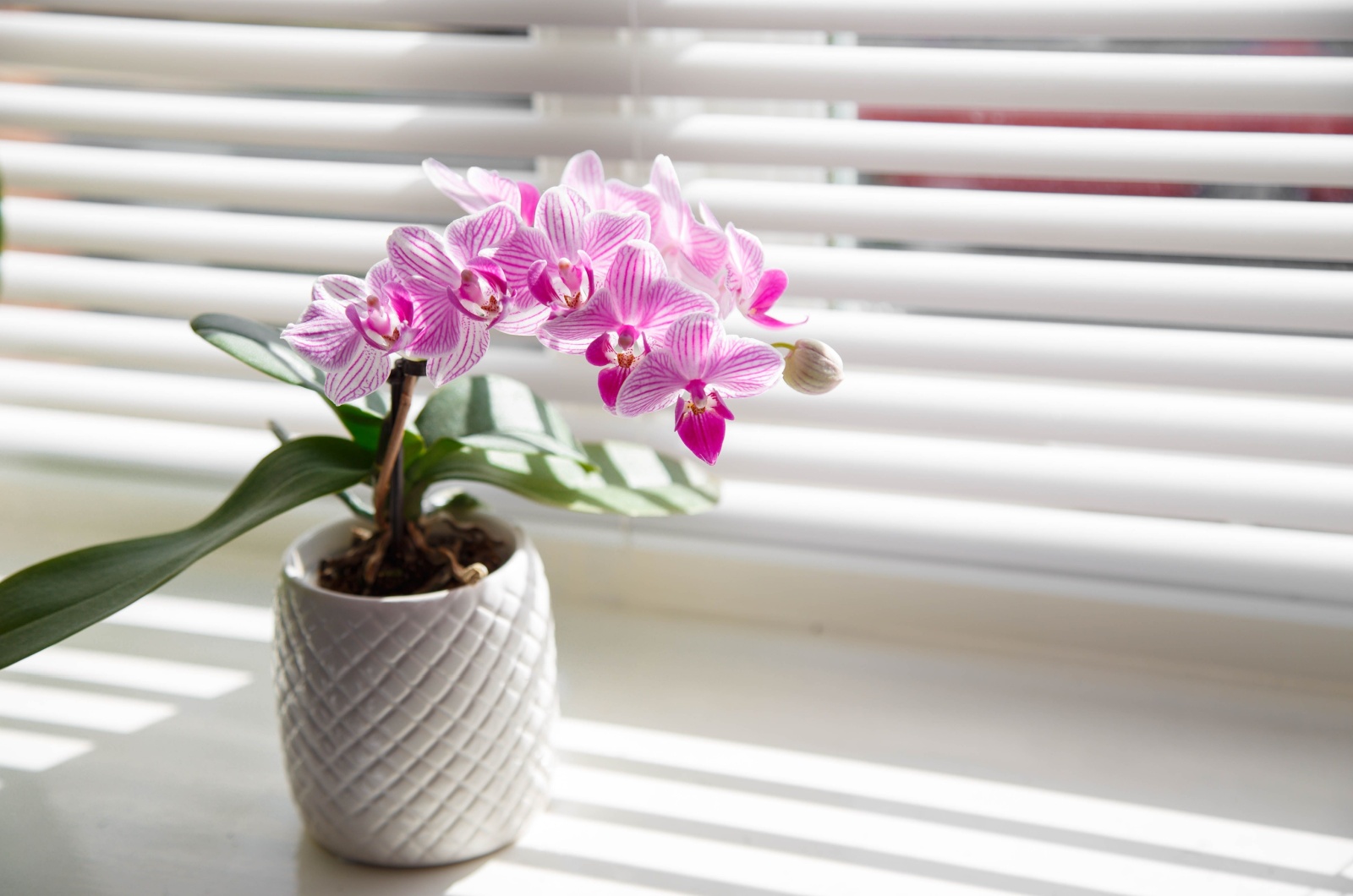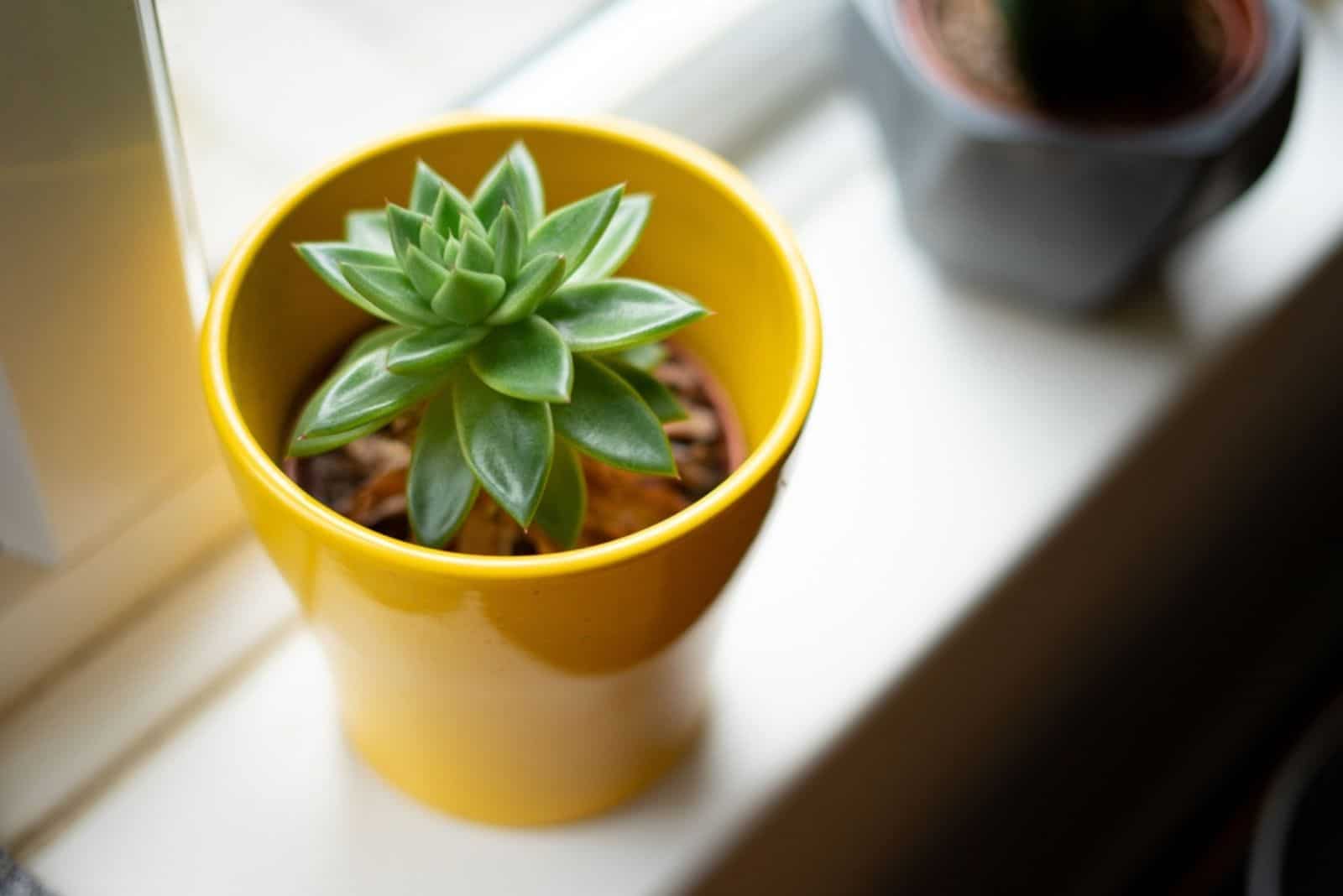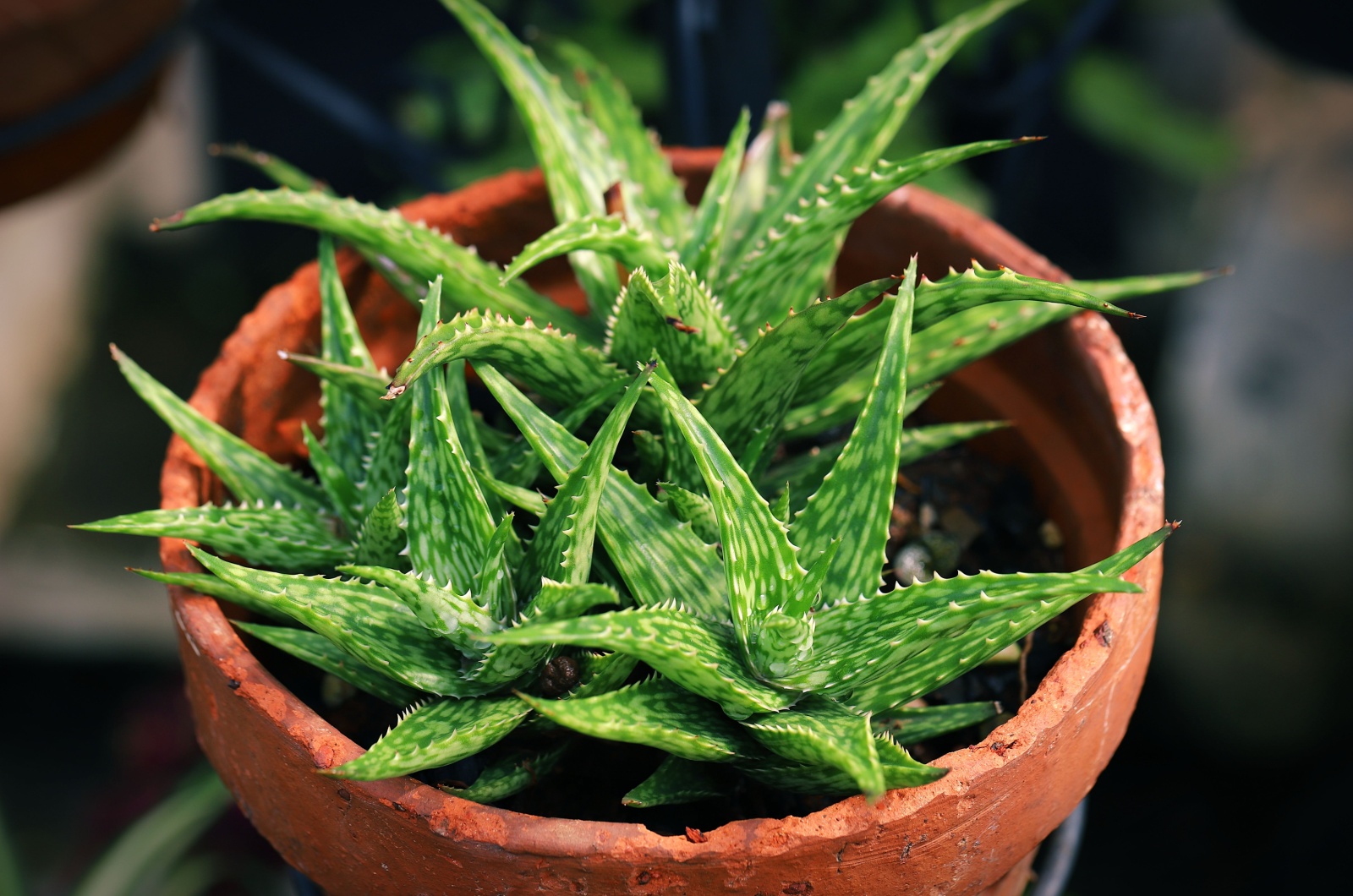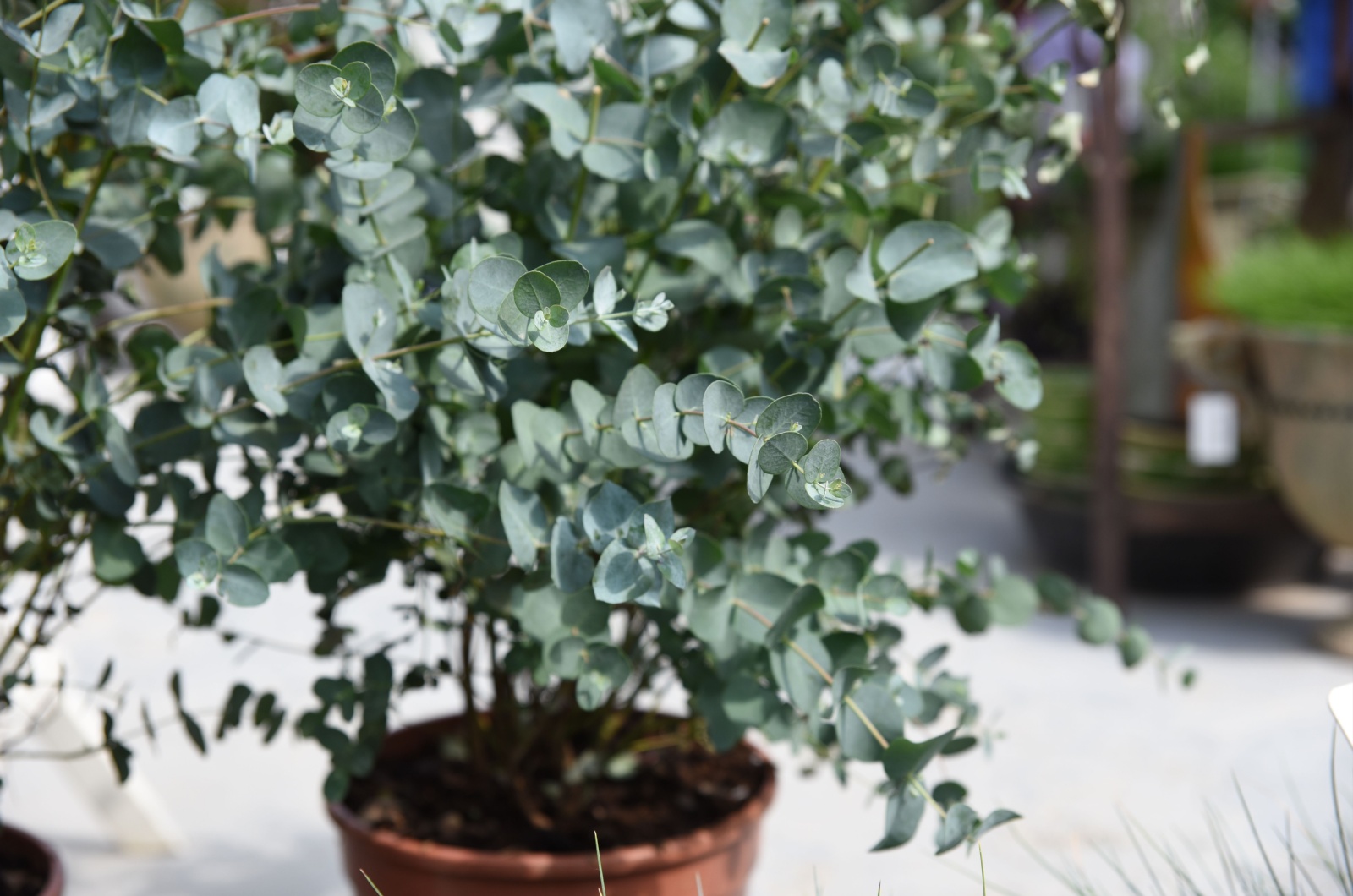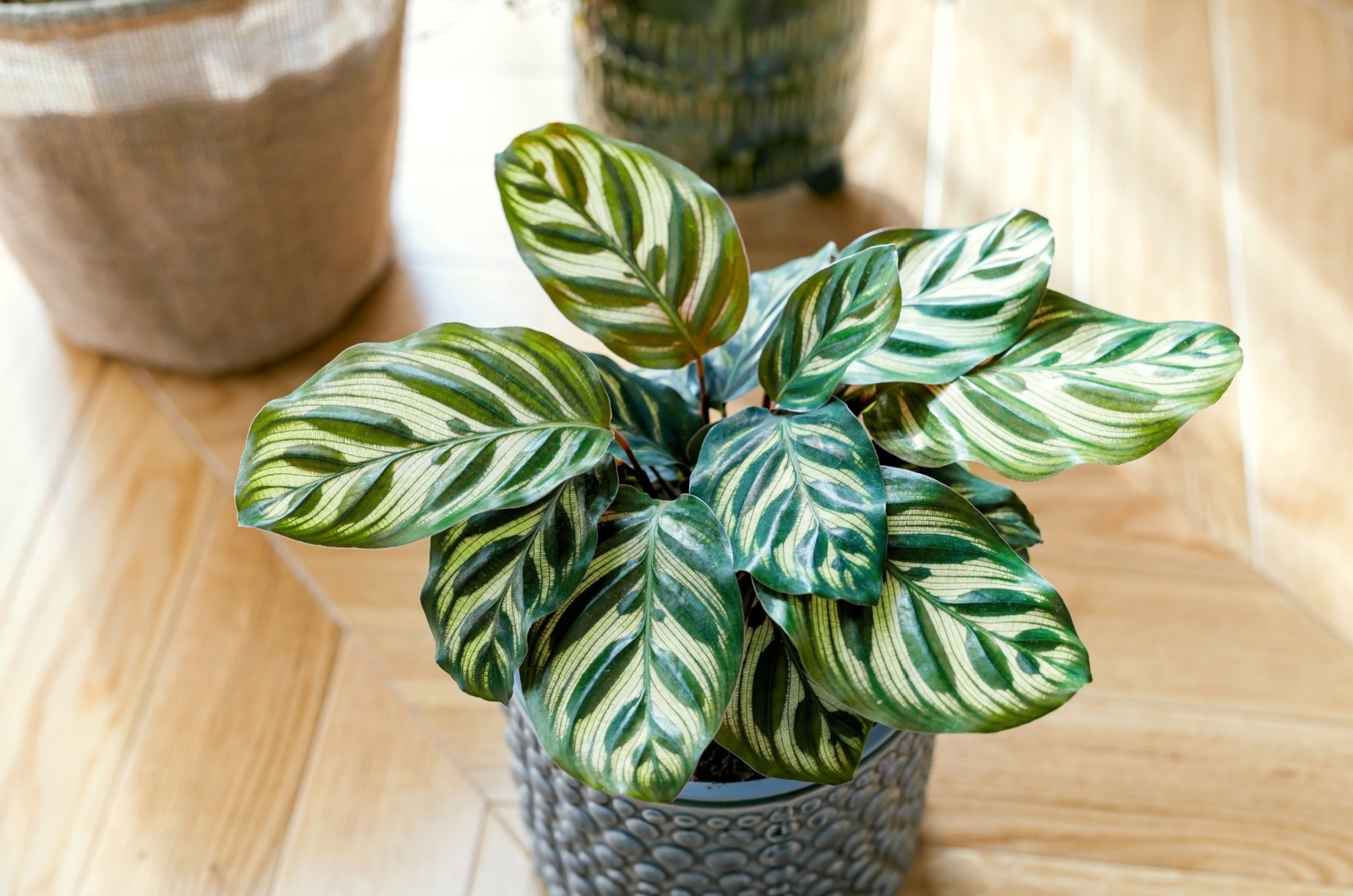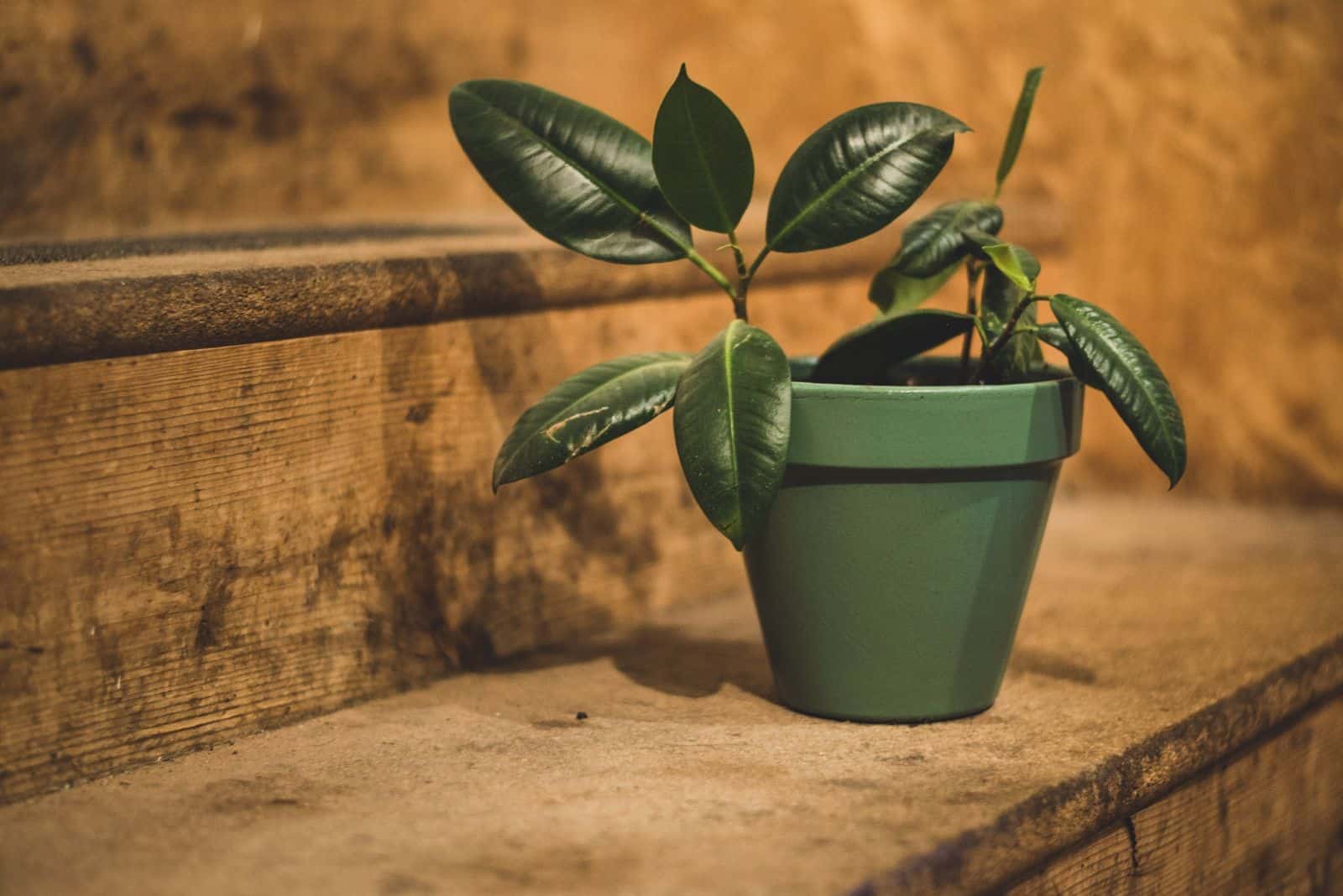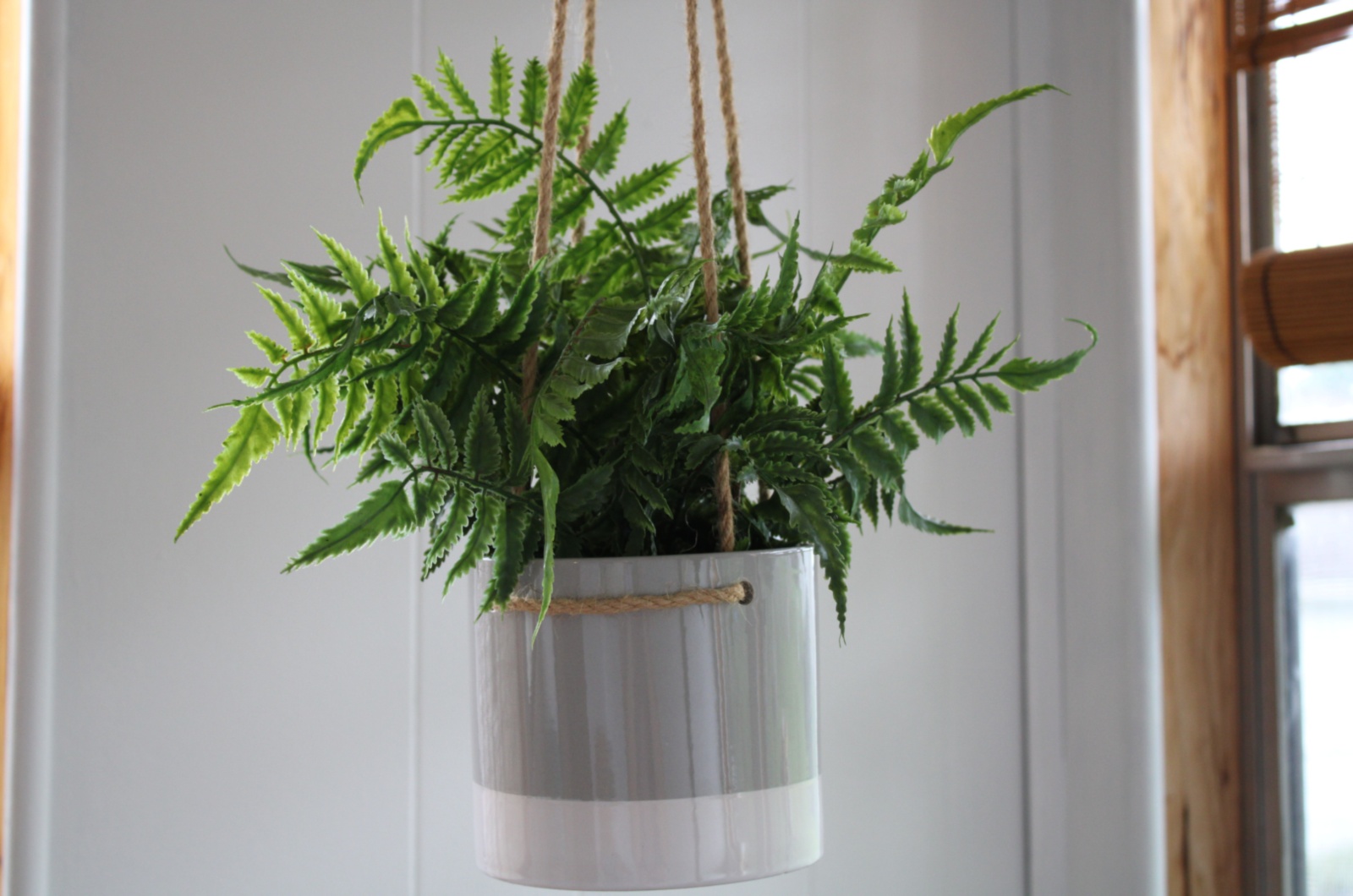If you are a plant enthusiast on a journey of spiritual awakening, then you have come to the right place!
Just like any other living being, plants also consume and produce energy. This basically means that plants can give off positive or negative energy in your home. The whole concept of feng shui is based on strategically putting plants in specific places in order to attract positive energy and abundance.
That being said, I did my research and gathered all the information I could regarding spiritual plants. Most of them are popular houseplants commonly found in households, while some might surprise you!
Keep reading to find out more!
1. Jasmine
Common names: Jasminum officinale
Plant description: This flowering plant belongs to the Oleaceae family. The leaves are pinnate and have 5 to 9 leaflets. The foliage is slightly downy. From early summer through autumn, the blossoms are aromatic and either white or pale pink.
Spiritual meaning: It is believed that jasmine can strengthen love, bring peace, and fill your space with all different kinds of positive aura. Jasmine’s mesmerizing fragrance can instantly boost your mood and calm your nerves.
Plant care: Grows best in well-draining soil. Needs full sun for proper growth. It should be watered once a week or even more frequently if it is unusually dry and hot.
2. Mint
Common names: Mint, Mentha, peppermint, Spearmint
Plant description: Mint has opposing fragrant leaves and square stems. Flowering mint produces tiny blooms, which are typically pale purple, pink, or white. The flowers grow in clusters and either form whorls or are crammed tightly onto a terminal spike.
Spiritual meaning: The refreshing mint fragrance can instantly cool your senses and lift your mood. It comes with numerous health benefits when utilized for culinary purposes. However, it is also frequently used in spiritual practices in order to purify a space and protect the energy.
Plant care: Mint should be watered once the soil feels dry. It can grow in full sun or partial shade. This herb thrives in well-draining soil. Be careful, as it might become invasive.
3. Basil
Common names: Basil, Ocimum basilicum, sweet basil
Plant description: This herbaceous plant has rounded leaves with pointy tips that grow on opposite sides of square stems. The leaves are generally light green, although some varieties have reddish or purplish leaves.
Spiritual meaning: Basil has astonishing spiritual healing properties. It is believed that basil contains antioxidant properties that can capture positive energy and attract luck and prosperity.
Plant care: Basil needs moist, well-draining soil and frequent watering in order to grow and thrive. It prefers growing in temperatures around 70 °F. Keep an eye out for pests such as aphids or spider mites because they might be the reason why your basil stem is turning brown.
4. Peace Lily
Common names: Spathiphyllum wallisii, peace lily, spathe flower, white sails
Plant description: Peace lilies have oval-shaped glossy leaves that are dark green. They also produce fragrant white flowers that fit perfectly with the dark-green background.
Spiritual meaning: As the name suggests, peace lilies are all about attracting peace and maintaining harmony indoors. These plants can accelerate the flow of positive energy but also reduce stress and negativity. In addition, these are one of the best air-purifying plants that can produce oxygen and improve the quality of air indoors.
Plant care: Peace lilies grow best in both mild and strong indirect light. They thrive in moist soil, which is why they have to be watered frequently. Warm temperatures and higher humidity make perfect growing conditions.
5. Thyme
Common names: Common thyme, Thymus vulgaris, garden thyme
Plant description: Low-growing shrub with woody stems and tiny green leaves. Exhibits characteristic purple flowers from late spring to late summer. It is often used as a ground cover.
Spiritual meaning: Thyme provides protection and purification. The plant has a reputation for bringing vitality and health into the home. It can repel negative energy and attract positive vibes.
Plant care: It thrives in well-draining, loose soil. Requires full sun, although can tolerate some shade. Established thyme is drought-tolerant, so it should be watered when the soil completely dries out.
6. Lucky Bamboo
Common names: Goddess of Mercy’s plant, Sander’s dracaena, Ribbon dracaena, Dracaena sanderiana
Plant description: The lucky bamboo plant produces stalk-like naked stems that end with long, thin leaves. It usually takes about three years for the plant to reach full maturity.
Spiritual meaning: Lucky bamboo is often used as a housewarming gift as it symbolizes luck and prosperity.
Plant care: This plant can grow in water and soil. If grown in water, filtered water should be used and changed regularly. If grown in soil, well-draining soil should be used and kept moist at all times. It grows well in low to medium light settings. Lucky bamboo might turn yellow when exposed to direct sunlight.
7. Money Plant
Common names: Pilea Peperomioides, Chinese money plant, friendship plant, UFO plant, pancake plant, friendship plant
Plant description: The Chinese money plant is a charming little plant with lovely circular, coin-shaped green leaves. Once the temperature drops, the plant blooms with white flowers on pink stems.
Spiritual meaning: The money plant is known to bring a lot of calm and peace into your home. This plant reportedly spreads a lot of goodness and positivity, and it can bring luck and wealth (they don’t call it the money plant for no reason!).
Plant care: When it comes to Chinese money plant care, it is quite easy to grow. The plant should be watered once the top few inches of soil have dried out. It thrives in well-aerated and well-draining soil that is rich in nutrients. The plant should be kept in bright, indirect light.
8. Jade Plant
Common names: Crassula ovata, silver dollar plant
Plant description: This wonderful plant is a succulent that has a long lifespan. It is native to South Africa and is mainly grown indoors for decoration as it produces lovely pink and white blossoms. Also, because of its modest size, you can put it on a table to create a vibrant workspace.
Spiritual meaning: The Jade plant spreads vibes that can immediately reduce stress levels and boost your mood.
Plant care: The Crassula ovata benefits from moderate temperatures and filtered light. The same is true for irrigation: water sparingly because excessive watering might cause root rot. Wait until the soil dries out before watering.
9. Sage
Common names: Salvia officinalis, common garden sage, culinary sage
Plant description: Sage is a hardy perennial herbaceous plant that belongs to the Lamiaceae family. It produces squared stems and opposite small leaves. The plant usually grows from 12 to 24 inches tall.
Spiritual meaning: Salvia officinalis is a powerful plant that is often used in rituals. It offers cleansing, protection, and purification. It will reduce negative energies and emotions and, at the same time, serve as a mood booster. In addition, sage is often utilized for medicinal purposes.
Plant care: Sage enjoys full sun exposure, a well-draining growth medium, and minimal watering requirements (particularly if established and able to survive on rain).
10. Rosemary
Common names: Rosmarinus officinalis, dew of the Sea, guardrobe, compass weed
Plant description: Rosemary has narrow, spear-shaped leaves that are deep green in color. Light-blue blossoms appear dispersed among the foliage, giving it a distinctive and festive appearance. Rosemary also has a unique fragrance.
Spiritual meaning: Rosemary has the ability to ward off evil karma and purify a living space. Its soothing aroma spreads serenity and reduces stress. It also comes with plentiful health benefits, which is why it is often used for culinary purposes.
Plant care: This plant should be grown in a sunny position that receives 6 to 8 hours of direct sunlight each day because rosemary plants need full sun exposure in order to grow and thrive. This is a drought-tolerant plant that doesn’t need frequent watering. The plant should be watered once the soil dries out.
11. Orchid
Common names: Orchidaceae, orchid
Plant description: Orchids are known for their characteristic colorful flowers. The colors may vary from blue, pink, white, red, purple, and blue to even black. Leaves are green, firm, and tube-shaped.
Spiritual meaning: Orchids may have different meanings depending on the variety. For instance, the meaning of a black orchid is absolute authority and power, while some also believe that it represents death. Still, almost all varieties have purifying properties and can balance energy indoors.
Plant care: Orchids require high humidity and temperatures between 65–75 °F. They thrive in bright, indirect sunlight. Frequent watering and well-draining fertile soil make for the perfect growing conditions.
12. Snake Plant
Common names: Dracaena trifasciata, mother-in-law’s tongue
Plant description: Snake plants have firm, long sword-like green leaves with yellow margins. The leaves usually grow up to 2 feet long. It is a low-maintenance plant that can adapt to various growing conditions.
Spiritual meaning: The meaning of the snake plant represents positivity, purity, and attracting good luck. It is said that the rare snake plant flower can improve creativity and bring good vibes.
Plant care: These plants can adapt to low light conditions, but they thrive in bright light. It is a drought-tolerant plant, so the soil should completely dry out between watering. The plant should be kept away from cold drafts and heat sources.
13. Vetiver
Common names: Poaceae, vetiver grass
Plant description: Vetiver is a tall, tufted bunchgrass that can grow up to 5 feet tall. Little brown-purple blooms are carried on long spikes by the rigid, upright stems and thin leaves. The plant also produces deep, fragrant roots.
Spiritual meaning: Vetiver has healing properties. It can help people with mental healing from trauma by anchoring and enhancing internal vital energy flow. Oil made out of vetiver is called tranquility oil. It helps with sleep, reduces stress, and attracts positive energy.
Plant care: Vetiver can grow and thrive in all types of soils. It can adapt to hot and humid climates. Young plants should be watered every other day. Once established, the plant should be watered weekly if there is no rain.
14. Aloe Vera
Common names: Aloe spp, Cape aloe, Barbados aloe, Aloe barbadensis miller
Plant description: This evergreen plant produces distinctive spiky gray-green leaves. Young plants have speckles on the leaves, but they disappear as the plant matures. The plant usually grows up to 2–3 feet tall.
Spiritual meaning: Known for its healing properties, it is believed that aloe vera can bring peace and serenity indoors. It also symbolizes prosperity and protection.
Plant care: Requires minimal watering. It can grow in full sun or partial shade. Fertilizing is necessary during the growing season (unless the soil is fertile). Warm temperatures and average humidity make the perfect growing conditions.
15. English Ivy
Common names: English ivy, Hedera helix
Plant description: Fast-growing plant that produces leaves containing three to five globes. It is also a climbing plant that is often grown as a hedge. White flowers also appear during the growing season, blending in perfectly with the green background.
Spiritual meaning: Infiltrates bad energy and air-borne toxins, thus improving the quality of air indoors. Best kept on doorways to welcome visitors, create good luck, and promote better health.
Plant care: English ivy can grow in both full sun and partial shade. It requires moderate temperatures, regular watering, and well-draining soil (but let the soil dry out between waterings). You can place this plant in the bathroom as well because it can also absorb moisture.
16. Eucalyptus
Common names: Ghost gum, Eucalyptus globulus, Nilgiri plant
Plant description: Fast-growing evergreen tree that can grow up to 200 feet tall. From late February to early July, this tree even produces magnificent flowers. However, the precise blooming time varies depending on the region and lasts around three months. As they age, the leaves become a darker blue-green or silvery-green and oval in appearance.
Spiritual meaning: This is one of the most positive spiritual plants on our list. It can immediately detect negativity and spread positive vibes instead. It is also believed that Eucalyptus can attract wealth.
Plant care: Thrives in full sun. Young trees should be watered weekly, while established ones should be watered once every three weeks. Soil should be mildly acidic and well-draining.
17. Calathea
Common names: Prayer plants, zebra plants, peacock plants, cathedral plants
Plant description: Tropical plants with wide green leaves (some Calathea types have variegations). They have a distinctive feature called nyctinasty, a phenomenon in which plants close their leaves at night and open them again in the morning. It looks like they are praying, hence the nickname prayer plant.
Spiritual meaning: These praying plants absorb all the negative energy around them and send out positive vibes instead!
Plant care: Keep them in warm temperatures between 65–85 °F. They thrive in bright, indirect light. Calathea plants should not be exposed to direct sunlight as it might lead to Calathea leaves curling and burning. Water once the topsoil has dried out.
18. Rubber Tree
Common names: Ficus elastica, sharinga tree, Indian rubber bush
Plant description: Rubber trees are known for their dark green, succulent-like foliage. Some varieties might produce burgundy leaves with variegations. Indoor plants usually grow up to 2 feet tall.
Spiritual meaning: They are known to increase peace and abundance.
Plant care: Requires high-quality, well-draining, and aerated soil. Depending on the fertilizer, fertilize it once a month with all-purpose liquid fertilizer or every three to six months with slow-release plant food. Thrives in bright, indirect light.
19. Ferns
Common names: Polypodiophyta, vascular plants
Plant description: Ferns create small, fluffy, sword-like leaves that look just amazing in hanging baskets. However, some ferns produce firmer, long, bright green leaves. These plants propagate by spores.
Spiritual meaning: Ferns promote positive energy, health, love, and protection.
Plant care: These low-maintenance plants flourish in a humid environment. Once the top few inches of the soil have dried, water them thoroughly. Fertilize them once a month during the growing season.
Wrapping Up
If you choose to grow any of these spiritual plants, you will fill your house with positive vibes, abundance, and peace!
When I was going through a rough patch, I went to buy a plant (as one does) and bought a tiny aloe vera plant. After a couple of weeks, I began to feel a lot better. I’ve noticed that my aloe has grown too. It seemed like the plant had absorbed all my negativity and stress.
What’s also great about these plants is that they are low-maintenance and easy to grow. Some herbaceous plants can even be used for culinary purposes as well!
I hope this article was helpful.
Until next time!

